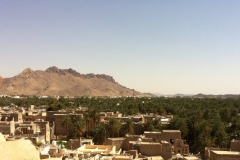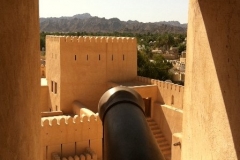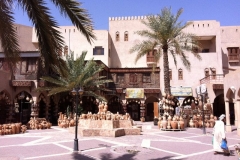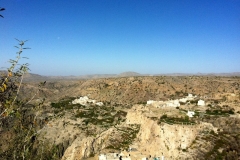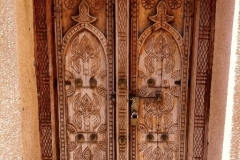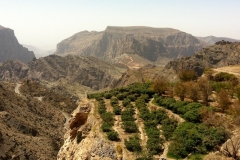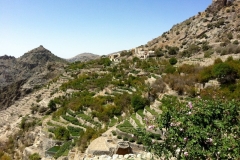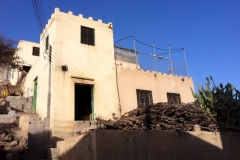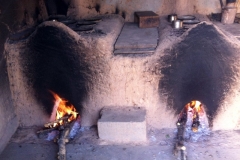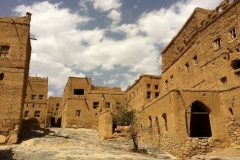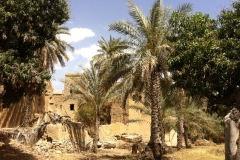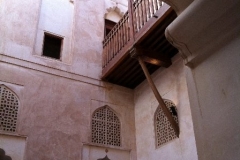Oman and the Al Hajar Mountains
Of Frankincense and Flowers, Pomegranates and Palms

During my latest visit to Oman, as well as visiting the coastal capital Muscat, I ventured into the interior to the Al Hajar Mountains, to Nizwa with its fort, and to the impressive Jebel Akhdar, or Green Mountain.
Click on the pictures below for a description of each place.
Situated at the South-Eastern corner of the Arabian Peninsula, the Sultanate of Oman is a country of spectacular landscapes: rugged mountains, sandy deserts and emerald groves of date palms. It is also a land of impressive forts; some have been meticulously renovated and are a real treat for the visitor, others are still in the long process of being restored.
Like Yemen, its neighbour to the south, Oman has traditionally been a centre for trade in frankincense, the aromatic resin of the tree of the same name. Once as valuable as gold, it was one of the gifts brought by the three kings of the orient to the baby Jesus. Whereas in the West, frankincense is used in churches, in Oman the dried sap is burnt in a clay incense burner to perfume clothes suspended above it. The trade in frankincense, together with that in copper and gold, was a source of great wealth for pre-Islamic Oman.
In the seventh century, Oman was quick to embrace the new religion of Islam and today three quarters of Omanis are Ibadi, a conservative form of Islam.
As a land of traders, Omani seafarers were renowned and the country’s naval strength was impressive. In the sixteenth century, the Portuguese, keen to establish control over trade routes to India, took advantage of the civil wars then plaguing Oman, attacked its ports and occupied parts of the coast.
The Omanis succeeded in ousting the Portuguese, however, and by the mid-seventeenth century the country was not only wealthy, but powerful with an empire extending as far as south Zanzibar and across the sea to parts of the Indian coast.
After the death of Sultan Said in 1856, the empire was divided between his two sons, one becoming the Sultan of Zanzibar and taking the African dominions, the other assuming the title of Sultan of Muscat and ruling over Oman. Economic stagnation followed and subsequent years saw the British intervening in Oman’s affairs.
In 1970, a palace coup brought the current ruler – Sultan bin Said – to the throne. During his reign, Oman has seen an economic, social and cultural ‘Renaissance’ with the country being transformed into a modern and flourishing state.
In heading inland to the Hajar Mountains, I ventured into areas which as recently as the mid-twentieth century had hardly been seen by Europeans. In his book Arabian Sands, the explorer and travel writer Wilfred Thesiger describes his intrepid journeys in the late 1940s through Oman’s interior, then a sometimes dangerous endeavour for an ‘infidel’.
Today, Oman’s interior is completely safe and has much to offer the visitor. You need a 4×4 to ascend the long, winding road to the top of Jebel Akhdar, but once up there the views are fantastic.
From down below, the mountain appears rocky and barren, but nestling beneath the Sayq Plateau 2000m up are carefully tended terraces of vegetables, pomegranate orchards and rows of fragrant rose bushes. The rose flowers are taken to a small distillery in Sayq, one of the villages which cling to the mountainside.
Oman has excellent roads, but the country is ten times the size of Belgium and so it is impossible to see everything in a short trip. A good excuse to go back! In this album, I would like to share with you a few photographs from my most recent visit to the Hajar Mountains region of this fascinating country.
RETURN

